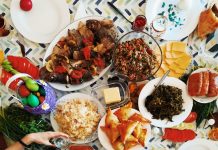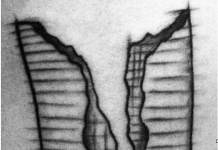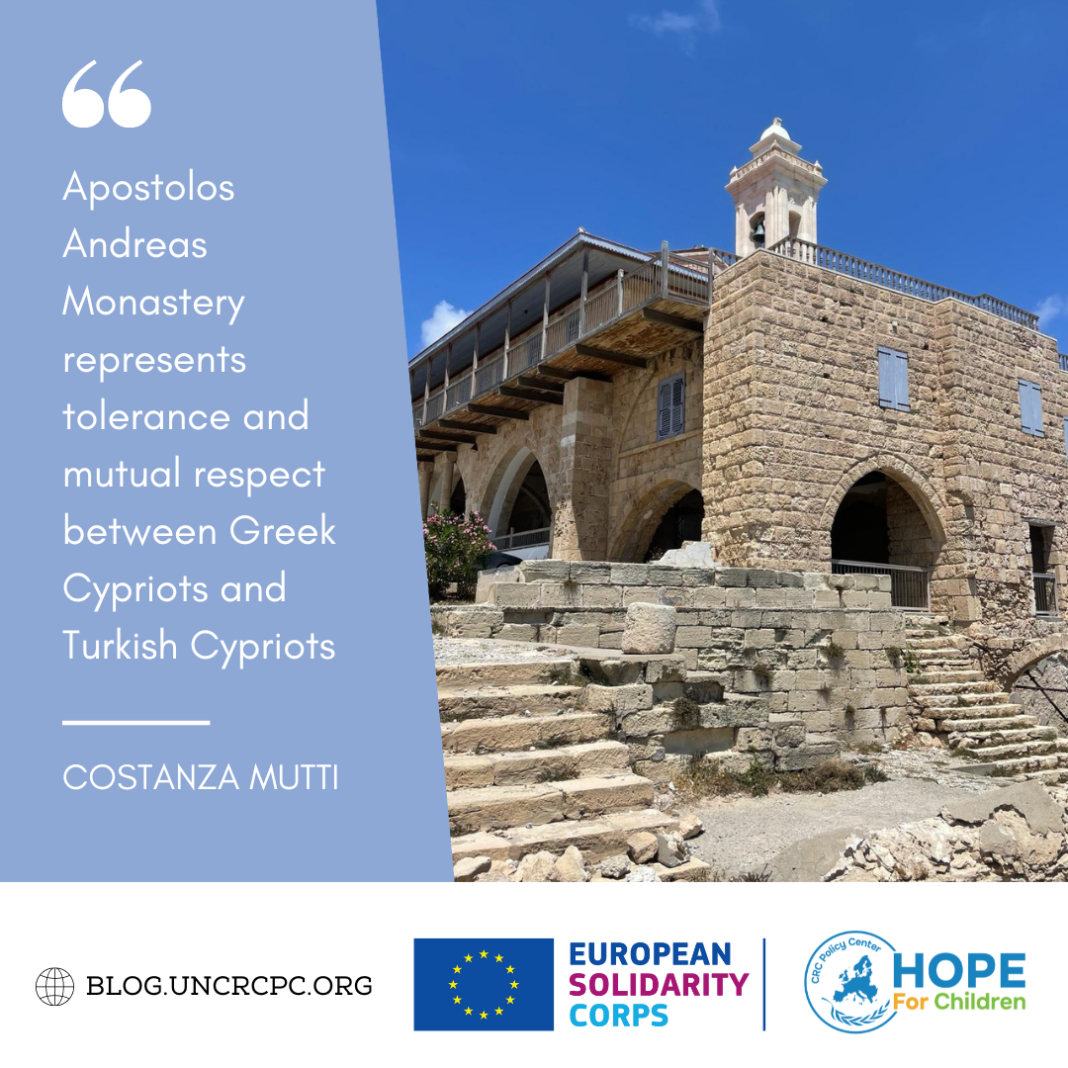The charming story of a treasure on the edge of Cyprus
By Costanza Mutti
A little south-west of Cape Apostolos Andreas, in the extreme north-east of the island of Cyprus, in the municipality of Rizokárpaso on the Karpas peninsula, is the Monastery of Apostolos Andreas. The monastery is dedicated to Saint Andrew and is the most important site of the Orthodox Church in Cyprus, and it is considered a sacred place by both Greek Cypriots and Turkish Cypriots.
This is why the place is visited by many worshippers for votive prayers. However, the belief that the monastery is a sacred place actually began even before the monastery was built.
According to tradition, during a journey to the Holy Land, the ship carrying St. Andrew went off course and struck the rocks near the promontory of this location. Once ashore, St. Andrew struck the rocks with his staff, at which point a spring gushed forth. The waters proved to have healing powers and restored sight to the ship’s captain, who was blind in one eye. Since then, the site became a place of pilgrimage and in the 15th century, a small chapel was built on the rocks near the shore, where healing water can still be collected today. The main monastery church that can be seen today was constructed above the small chapel and dates back to the 18th century, while the main buildings are 100 years younger.
You can still see the well from which the water flows today, located in a beautiful spot in front of the sea. This water has become so important to the Greek Cypriot community that many young people go to fetch water from the well to take it to their grandparents and cheer them up. Considering that after the outbreak of the war, and the division of the island that followed, many Greek Cypriots were prevented or impeded from traveling to the monastery located in the north of the island, receiving the famous monastery water carries a high symbolic value. Indeed, for 30 years, very few pilgrims visited the monastery, but with the opening of the crossing points in the 2000s, this flow slowly increased again.
Although the place seems to have gained importance thanks to St. Andrew, mass pilgrimage is relatively recent and dates to the early 20th century. The story recounts that in 1895, the son of Maria Georgiou was kidnapped. Seventeen years later, the Saint appeared to her in a dream, telling her to pray for the return of her son to the monastery. Living in Anatolia, the woman embarked on the crossing to Cyprus on a very crowded boat. While telling her story during the journey, one of the passengers, a young Dervish priest, became increasingly interested. Asking her if her son had any distinguishing marks, and hearing about a pair of birthmarks, he stripped off his clothes to reveal the same marks, and in this way, mother and son were reunited.
After the events of 1974 and the outbreak of war, pilgrimages to the site became less frequent. The monastery fell into a state of disrepair and when, starting in 2004, both sides of Cyprus were allowed to go to the other side for visits, more people visited the monastery and discovered the damage it had suffered. In September 2014, after many delays due to disputes between the two sides of Cyprus, renovation work began, undertaken by two construction companies, one Greek Cypriot and one Turkish Cypriot. The work was overseen by the Church of Cyprus and the Turkish Cypriot Efkaf administration.
Turkish Cypriots and Greek Cypriots took part in the restoration work together, as they consider the monastery a common cultural heritage as well as a common richness. Some information has been placed inside the monastery, along with photos of the restoration works and a plaque displaying these words: “Apostolos Andreas Monastery represents tolerance and mutual respect between Greek Cypriots and Turkish Cypriots”.
If one happens to be in Cyprus, a visit to this inspiring monastery is a worthwhile experience, not only for the site itself and the beautiful surrounding landscape, but also as a way to be aware of the history and issues affecting this country.

















